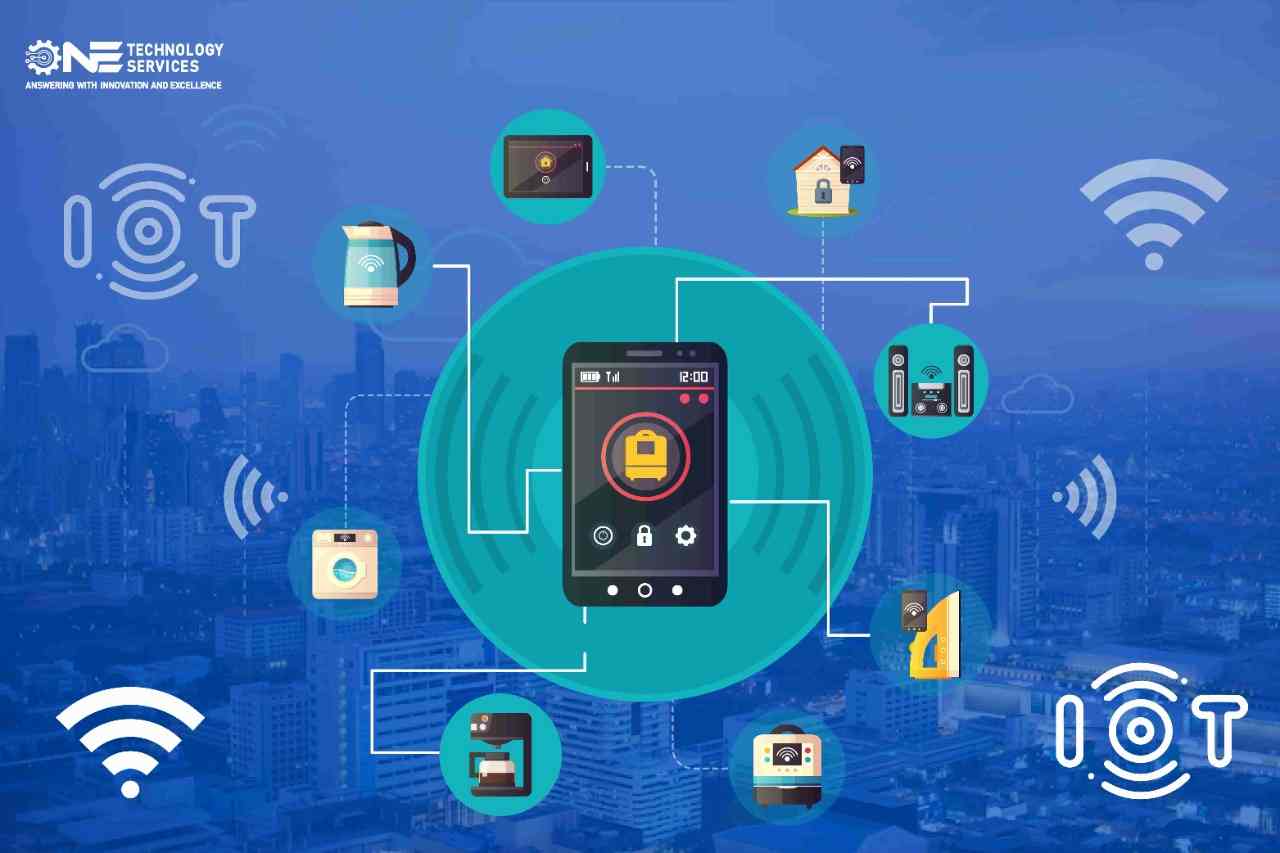From smart homes and connected vehicles to predictive maintenance in factories — IoT sensors are the building blocks of the Internet of Things revolution. But what exactly are these sensors, how do they function, and why are they so crucial to digital transformation?
In this guide from One Technology Services, we’ll break down everything you need to know about how IoT sensors work, their types, architecture, communication protocols, and real-world applications across industries.
What Are IoT Sensors?
IoT sensors are physical devices that collect data from their environment and transmit it to other devices or platforms — typically over the internet. They form the sensory organs of IoT systems, enabling machines to “feel,” “see,” “hear,” or “measure” their surroundings.
Key functions of an IoT sensor include:
- Sensing physical phenomena (temperature, motion, pressure, etc.)
- Converting analog input into digital data
- Transmitting data to a processing unit or cloud platform
- Enabling data-driven automation, alerts, and decision-making
The Basic Workflow: How Do IoT Sensors Work?
Here’s a simplified flow of how IoT sensors operate:
- Detection: The sensor detects physical or environmental changes (e.g., heat, vibration, gas).
- Conversion: The analog signal is converted into a digital signal.
- Processing: The data is either processed locally (on the edge) or sent to a microcontroller or gateway.
- Transmission: The processed data is transmitted to a server or cloud via Wi-Fi, cellular, Bluetooth, Zigbee, or LoRa.
- Action: Based on analytics, the system may trigger alerts, adjust settings, or inform a human operator.
Key Components of an IoT Sensor System
An IoT sensor ecosystem typically consists of the following components:
- Sensor Hardware: The component that physically measures the environmental variable.
- Microcontroller (MCU): Interprets sensor data and manages connectivity.
- Connectivity Module: Transmits the data to the network (Wi-Fi, 5G, LPWAN, etc.).
- Power Source: Battery, energy harvesting, or wired power supply.
- Edge or Cloud Platform: Where data is stored, analyzed, and used for decision-making.
One Technology Services helps businesses choose the right architecture based on cost, reliability, and power constraints.
Common Communication Protocols for IoT Sensors
How do IoT sensors “talk” to the internet or local systems?
Here are the most widely used communication methods:
| Protocol | Use Case | Range | Power Consumption |
|---|---|---|---|
| Wi-Fi | Smart homes, offices | Medium | High |
| Bluetooth Low Energy (BLE) | Wearables, healthcare | Short | Low |
| Zigbee | Home automation | Short/Medium | Low |
| LoRaWAN | Smart agriculture, utilities | Long | Very Low |
| NB-IoT | Industrial IoT, smart cities | Long | Low |
| 5G | Real-time applications | Long | High |
Types of IoT Sensors (With Examples)
There are many types of IoT sensors, each serving unique use cases. Let’s explore some of the most common:
1. Temperature Sensors
Used in: HVAC, industrial equipment, cold chain monitoring
2. Proximity Sensors
Used in: Smart parking, security systems, automation
3. Motion Sensors
Used in: Intruder detection, smart lighting, occupancy tracking
4. Humidity Sensors
Used in: Agriculture, HVAC, food storage
5. Pressure Sensors
Used in: Industrial control, automotive, oil and gas
6. Accelerometers & Gyroscopes
Used in: Wearables, drones, logistics
7. Gas Sensors
Used in: Mining, manufacturing, smart homes
8. Image Sensors
Used in: Smart surveillance, quality control, machine vision
One Technology Services provides integration services for multi-sensor environments, ensuring seamless data flow from edge to cloud.
IoT Sensor Use Cases by Industry
Logistics & Supply Chain
- GPS + temperature sensors for cold chain monitoring
- Shock/vibration sensors for fragile goods
- Real-time tracking and inventory visibility
Manufacturing
- Vibration and temperature sensors for predictive maintenance
- Air quality and gas sensors for safety compliance
- Proximity sensors for equipment automation
Agriculture
- Soil moisture sensors to optimize irrigation
- Weather sensors to forecast crop disease risk
- GPS + drones for land surveying and spraying
Smart Cities
- Air pollution sensors on streetlights
- Smart trash bins using fill-level sensors
- Traffic and pedestrian flow optimization
Healthcare
- Wearable biosensors for heart rate, glucose, etc.
- Smart beds and occupancy detection
- Remote patient monitoring (RPM) for elderly care
Data Security in IoT Sensor Networks
Because IoT sensors collect and transmit sensitive data, cybersecurity is a critical concern.
At One Technology Services, we implement the following security measures:
- End-to-end encryption for all data transmissions
- Secure boot and firmware integrity validation
- Device authentication and role-based access controls
- Real-time anomaly detection systems
- Compliance with industry standards like ISO 27001 and HIPAA
Edge vs Cloud: Where Should Sensor Data Be Processed?
- Edge computing processes data locally at the sensor or gateway level — ideal for real-time applications.
- Cloud computing offers greater power and scalability — better for storage, analytics, and reporting.
Our hybrid approach at One Technology Services allows businesses to balance latency, cost, and control depending on their use case.
Lifecycle Management of IoT Sensors
Deploying sensors is just the beginning. Maintenance and lifecycle planning are essential for long-term ROI.
We support:
- Firmware updates and patching
- Battery optimization strategies
- Sensor calibration and health diagnostics
- End-of-life decommissioning and replacement planning
How One Technology Services Supports Your IoT Initiatives
One Technology Services offers end-to-end IoT sensor deployment and integration services, including:
- Solution design and sensor selection
- Network protocol evaluation and setup
- Secure edge/cloud platform configuration
- Data analytics and dashboard integration
- Ongoing monitoring, support, and compliance
Whether you’re rolling out a pilot project or scaling to thousands of endpoints, our team ensures your sensors deliver real insights — not just raw data.
Get Started with Smarter Sensing
Ready to unlock the power of IoT sensors in your business?
Email us at: info@onetechnologyservices.com
Call now: +1 (469) 359 7555
Visit: https://onetechnologyservices.com
Let One Technology Services help you build connected environments that are intelligent, secure, and future-ready.

